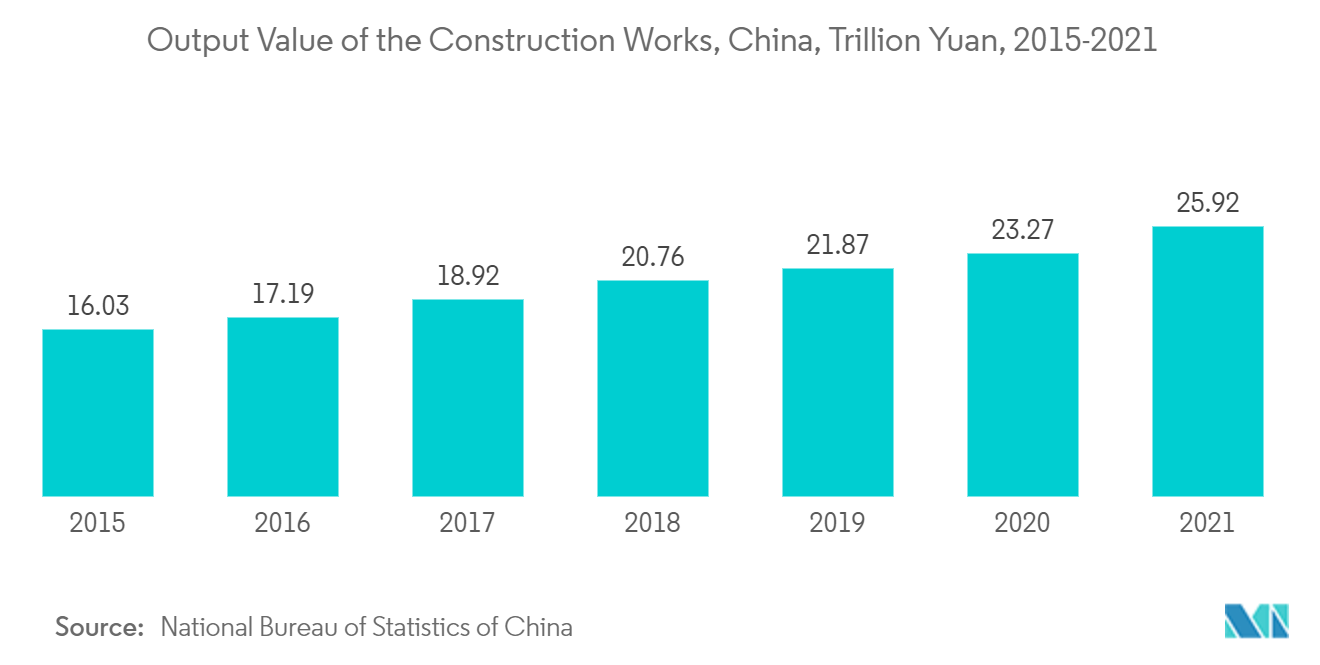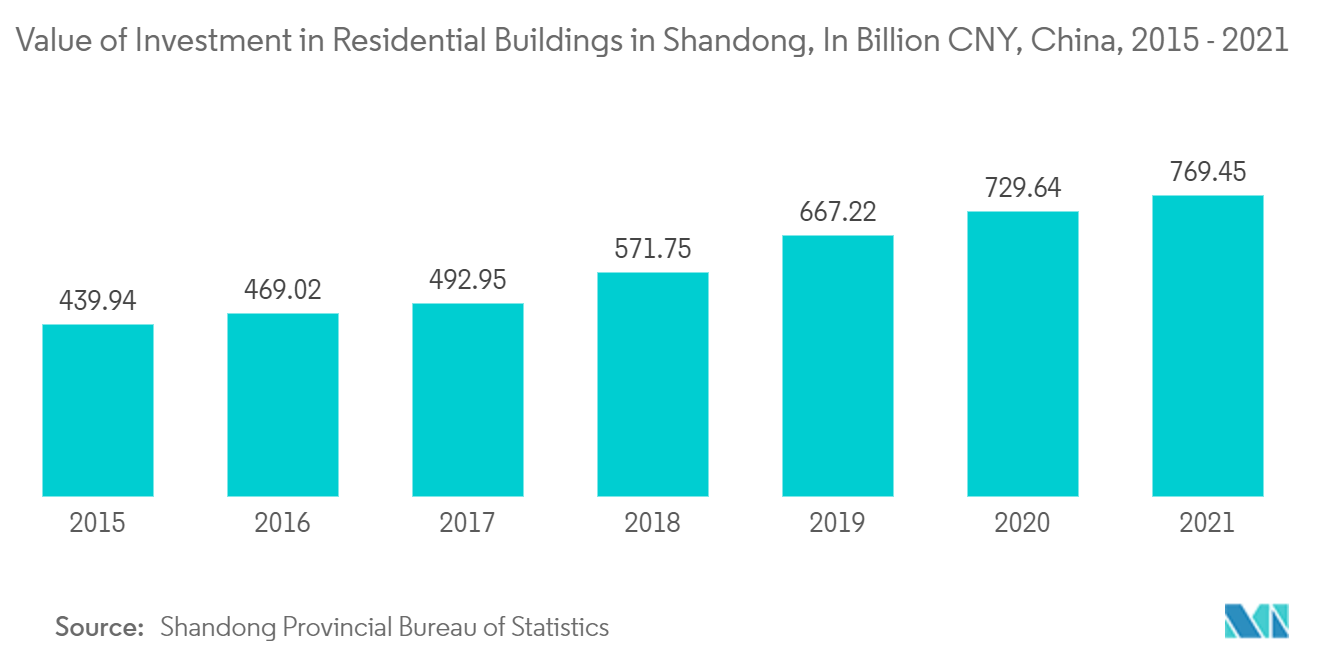Market Trends of China Smart Building Industry
This section covers the major market trends shaping the China Smart Building Market according to our research experts:
Infrastructure Management System is Expected to Hold a Significant Market Share
- Smart buildings use sensors, actuators, and microchips to collect and manage data according to a business' functions and services. Infrastructure management systems help owners, operators, and facility managers improve asset reliability and performance, reducing energy use, optimizing space used, and minimizing the environmental impact of buildings. The rising adoption of IoT-enabled infrastructure management systems and raising awareness of space utilization are expected to drive the market's growth in the country.
- The infrastructure management systems scenario is evolving with the arrival of sensors, analytics, and cloud technologies focused on reducing the costs of BMS while at the same time transforming the market dynamics of application manufacturers, systems integrators, and solution providers.
- The current IoT platforms for buildings and infrastructures enable a connection between the building's equipment, which is distributed by devices and sensors that use a wide variety of protocols, which transfer the data they generate to services and applications in the Cloud to be analyzed subsequently by Business Intelligence (BI) systems, analytics, and dashboards. The infrastructure for collecting data of sensors and devices filters and securitizes the information through intermediate protocols and forwards it to a cloud or the data center in the building itself.
- Further, the developers of IoT systems and infrastructure management systems for office buildings and shopping centers in the studied region have realized that integrating environmental control platforms into the architectural infrastructure leads to improved efficiency and significant cost savings. The development of sensor technology and analytics has aided the deployment of internet-based connectivity systems and the demand for smart buildings for large and small structures.
- With IoT sensors monitoring occupancy and reacting accordingly, a connected smart building can automatically respond to occupancy changes by turning off lights and adjusting HVAC systems to reduce consumption, accurately controlling how and where a building should manage its energy.

Residential is Expected to Hold a Significant Market Share
- A smart building creates value by providing an innovative approach compared to non-smart buildings. For instance, Smart sensors can monitor homes for leaks and are used in some communities to help monitor vacant homes. These sensors can communicate in various ways, including cell service, Wi-Fi, 6lowpan, ZigBee, and LoRa. Smart sensors that detect and can prevent dangerous situations from arising in residential.
- The market vendors are actively introducing new solutions. For instance, in January 2020, ADT announced a home security platform. Blue by ADT is the advanced product offering, individual home security parts that clients can install and design with proficient checking and capacity choices.
- Additionally, in August 2020, Google and ADT formed a long-term partnership to create the next generation of smart security solutions. The partnership will combine Google's hardware and services and ADT's DIY and professionally installed smart home security solutions to innovate the residential security industry.
- In December 2020, Guangzhou-based real estate developer Seedland Group released an innovative over-the-air or OTA smart community in Beijing. The system uses OTA, a new cloud-based download technology, to provide services, updates, and information to community members, creating greater convenience and offering a wider range of services.


